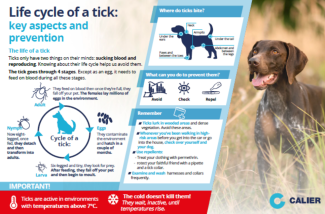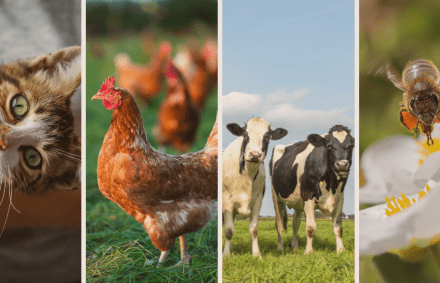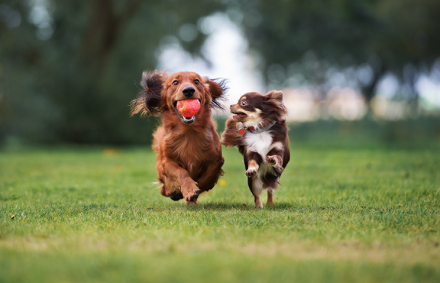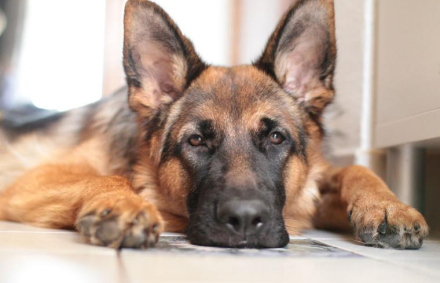
The life of a tick
Ticks only have two things on their minds: sucking blood and reproducing. Knowing about their life cycle helps us avoid them. The tick goes through 4 stages. Except as an egg, it needs to feed on blood during all these stages.
Eggs:
They contaminate the environment and hatch in a couple of months
Larva:
Six-legged and tiny, they look for prey. After feeding, they fall off your pet and then begin to moult.
Nymph:
Six-legged and tiny, they look for prey. After feeding, they fall off your pet and then begin to moult.
Adulta:
Now eightlegged, once fed, they detach and then transform into adults.
Where do ticks bite?
Neck, Armpits, Under the ears, Under the tail,Paws and between the toes, Abdomen and between the legs.
What can you do to prevent them?
-Avoid
-Check
-Repel.
Remember
Ticks lurk in wooded areas and dense vegetation. Avoid these areas.
Whenever you’ve been walking in highrisk areas before you get into the car or go into the house, check over yourself and your dog.
Use repellents:
- Treat your clothing with permethrin.
- Protect your faithful friend with a pipette and a tick collar.
Examine and wash harnesses and collars frequently.
IMPORTANT!
Ticks are active in environments with temperatures above 7°C.
The cold doesn’t kill them! They wait, inactive, until temperatures rise.



